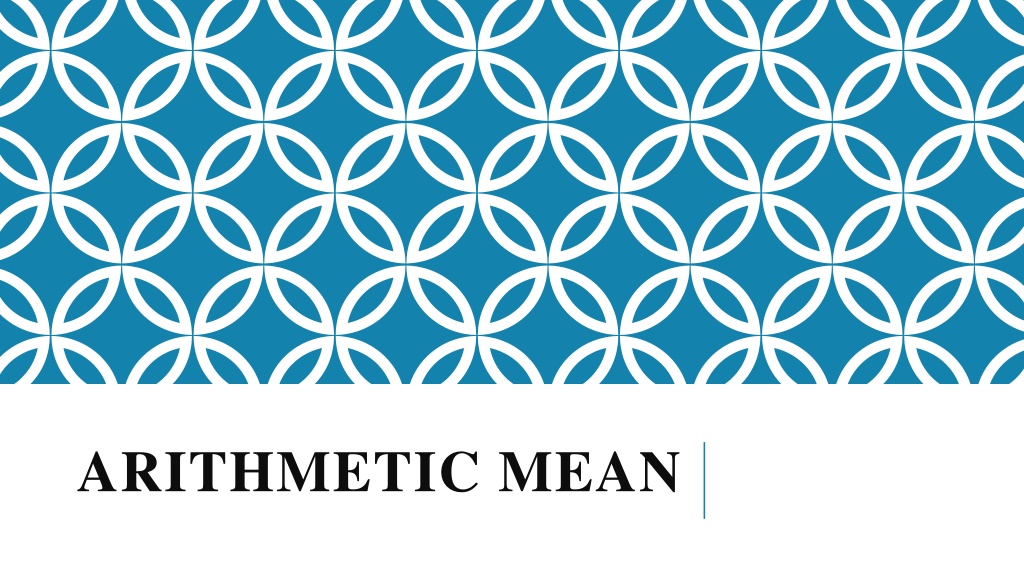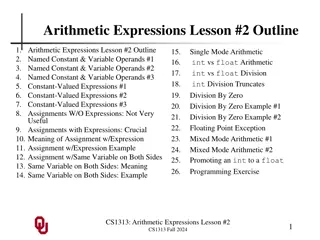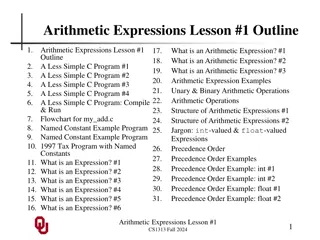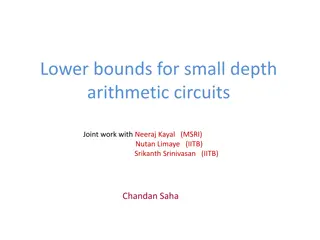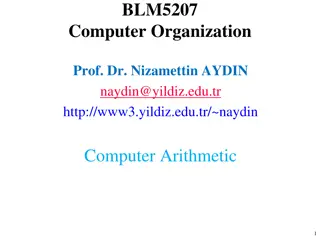Understanding Arithmetic Mean Calculation Methods
Arithmetic mean can be calculated in individual, discrete, and continuous series. In individual series, each item is listed separately, while in discrete and continuous series, items are grouped with frequencies. The mean can be computed using formulas tailored to each type of series, including methods involving assumed mean and step deviation. Explore the different approaches to finding the arithmetic mean in various types of data sets.
Download Presentation

Please find below an Image/Link to download the presentation.
The content on the website is provided AS IS for your information and personal use only. It may not be sold, licensed, or shared on other websites without obtaining consent from the author. Download presentation by click this link. If you encounter any issues during the download, it is possible that the publisher has removed the file from their server.
E N D
Presentation Transcript
INDIVIDUAL SERIES Arithmetic mean can be calculated in individual, discrete and continuous series which are as follows In individual series An individual series is one in which the items are listed separately and each item appears as an individual unit. It is also referred to as ungroup data. The Arithmetic mean for this series can be computed by using the given formula ? ? ? = where ? = sum of all observations; n = number of observations or terms
DISCRETE AND CONTINUOUS SERIES In discrete and continuous series In these series, items are represented along with their respective frequencies. It refers to as grouped data. The Arithmetic mean in these can be completed by the following formula ? = ?? ? where ?? = Sum of the product of observations and corresponding frequencies; ? = Sum of frequencies Note- In continuous series, mid value is taken as X. It is calculated as follows Mid-value(X) = ????? ?????+????? ????? 2
If we use assumed mean or short-cut mean method the following formula is used ? = A ??? ? where A = Assumed mean; ? = Sum of frequency and ??? = Sum of products of frequency and deviation from assumed mean If we use step deviation method the following formula is used ? = A ?? ? ? ? Where, ?? ? = Sum of product of step-deviations with frequency Where, step deviation (d x) = ? ? C = Common factor; A=Assumed mean and ? = Sum of frequencies ?
